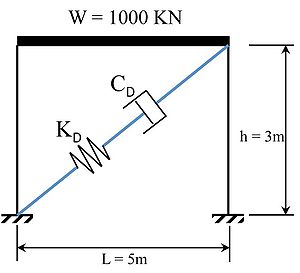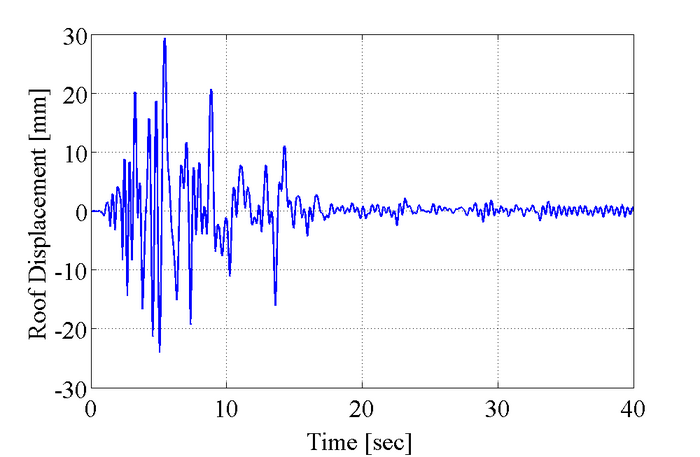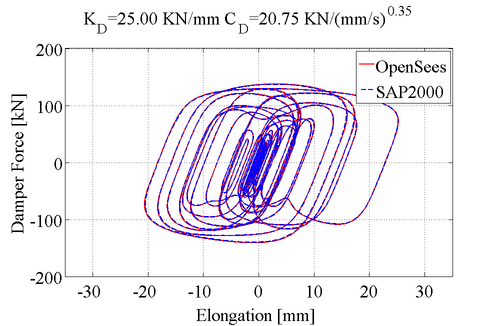Dynamic Analyses of 1-Story Moment Frame with Viscous Dampers
Example posted by: Sarven Akcelyan & Prof. Dimitrios G. Lignos (McGill University)
This example demonstrates how to use the viscous damper material within a simple single story shear frame.
The files needed to analyze this structure in OpenSees are included here:
- The main file: File:ShearFrameVD.tcl
Supporting files
- TakY.th – uses the JR Takatori record from the Kobe 1995 earthquake (available in the zip file below)
All files are available in a compressed format here: Viscous_Damper_Example.zip
The rest of this example describes the model and shows the analysis results.
Model Description

The viscous damper is modeled with a Two Node Link Element. This element follows a Viscous damper hysteretic response. An idealized schematic of the model is presented in Figure 1.
The units of the model are mm, kN, and seconds.
Basic Geometry
The single bay single story frame shown in Figure 1 has 5000mm bay width and 3000mm story height (centerline). The period of the system is 0.7sec. Columns and beams of the frame are modeled with elastic beam-column elements.
Damper Links
A Two Node Link Element is used to link the two nodes that define the geometry of the viscous damper.
Constraints
the Nodes at the base of the frame are fixed. The beam (element 3 in Figure 1) is considered to be rigid.
Viscous Damper Material
To model the viscous damper the ViscousDamper is used. The input parameters that are selected for the damper example are as follows: Axial Stiffness K = 25 kN/mm, Damping Coefficient Cd=20.74 kN(s/mm)0.35 and exponent a=0.35.
Loading
The single story frame with viscous damper is subjected to the 50% JR Takatori record from the Kobe 1995 earthquake in Japan.
Recorders
The recorders used in this example include:
- The Element recorder to track the damper axial force and axial displacement.
- The Node recorder to track the Frame displacement history at its roof.
Analysis
A uniform excitation option is selected with application of ground acceleration history as the imposed motion. The Newmark integration scheme is selected for integration of the equations of motion with a time step dt = 0.001sec. Two percent mass proportional damping is used.
Results
Simulation Results for the 50% JR Takatori Record

- The force - displacement relationship from the viscous damper are shown in Figure 3. A comparison with results from a SAP2000 model is also shown in Figure 3. Results are nearly identical between the two models.
